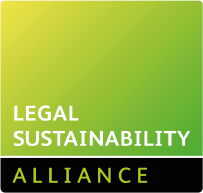Evidence of behavioural change is being seen already with one large claimant firm seemingly withdrawing all offers on claims with non-tariff injuries in the OIC Portal.

The Claims Industry is at a Pivotal Moment
The Supreme Court has handed down judgment in the whiplash ‘mixed injury’ cases of Hassam and another v Rabot and another [2024] UKSC 11. Whilst decisions of the Supreme Court can be difficult to predict, on this occasion there were no surprises and the decision of the majority of the Court of Appeal has been upheld.
The outcome states that in mixed claims consisting of tariff “whiplash” and non-tariff injuries, the court should:
- Assess the tariff award;
- Assess the award for PSLA for the non-tariff injuries on common law principles;
- Add the two amounts together; then
- “Step back” and consider any necessary adjustment to avoid any possible overcompensation.
The caveat remains that the final award cannot be less than what would be awarded for the non-tariff injuries alone.
Evaluating the Decision
While the decision will be disappointing for insurers, it should be kept in mind that the scope for a substantially different decision was always going to be limited. Damages for PSLA consist of three elements: –
- Pain
- Suffering
- Loss of Amenity
As in the Court of Appeal (CA), the argument was focused on, and effectively limited to, just the third element, loss of amenity, and the potential overlap of the same loss of amenity being compensated for in the tariff award and in the common law award for the non-tariff injury.
Take for example, a claimant who suffered a 5 month neck injury and a 3 month knee injury and who was unable to play football for 3 months. The neck injury or knee injury alone would have prevented this claimant from playing football. The claimant would not be awarded damages for the loss of amenity (football) being caused by the neck injury and damages for the same loss (of amenity) being caused by the knee injury.
This is compensation for the consequential effects of the injuries upon a claimant’s lifestyle, it has not been argued that there could be a deduction for overlap in respect of pain and suffering. As the Master of the Rolls observed in the CA judgment:
“The damages claimed for the pain and suffering caused by the knee injury in Rabot and by the knee, elbow, chest and hip injuries in Briggs are, of course, not covered by the statutory provision limiting the amount of damages for the PSLA caused by the whiplash, because that pain and suffering caused by those injuries was not the same as the pain and suffering caused by the whiplash.”
If damages for pain and suffering are not being adjusted, then the question is just how much of these awards are made for pain/suffering and how much for loss of amenity? We don’t generally have that breakdown, but one would expect that in most cases the majority of the award would be for experiencing pain and suffering.
This is illustrated in Briggs v Laditan. The tariff award was £840. The non-tariff injuries were to the elbow, knee, chest and hips. The District Judge stated:
“The Claimant took 4 days off work as a taxi driver before returning to normal duties and hours. There were no other significant problems caused in terms of loss of amenity.” and
“I cannot discern any particular difficulty occasioned by any of these injuries, particularly the knee injury, but they were clearly painful to a degree over a period of time. Overall, I think a free-standing award would be in the region of £3,000.00. That figure is reached by taking the JC Guideline figure of £2,250.00 in respect of the knee injury and adding an element for the other issues.”
That gave a total award of £3,840 which the DJ adjusted to £2,800, a £1,040 deduction. This was regarded as too great a deduction by Nicola Davies LJ (in the CA) who assessed damages at £3,500, so only £340 was deducted as the overlap in loss of amenity.
What will be the impact of the decision?
In many cases that have stalled in the OIC, the issue won’t solely be the calculation of an adjusted overall figure, but also the valuation of the non-tariff injury itself. Global valuations may need to be reviewed, particularly any offers based on a more favourable anticipated outcome, but there is likely to still be distance between parties’ positions in many cases.
Unhelpfully, the decision comes on the heels of the 22% increase in the Judicial College Guidelines. We anticipate that the combination of these two will lead to an increasing number of claims being removed from the OIC Portal (by valuations of personal injury over £5,000).
Evidence of behavioural change is being seen already with one large claimant firm seemingly withdrawing all offers on claims with non-tariff injuries in the OIC Portal.
With increased opportunities to recover higher costs from insurers (and claimants with Conditional/Damage Based Agreements) this is likely to breathe oxygen into the claims environment and continue to encourage the fraudulent inclusion of additional injuries. The response (of Lord Burrows) to this concern was, perhaps, to be expected, “that would be a policy problem for Parliament to address and would not be something that the courts could, or should seek, to deal with by distorting the legislation.”
With a general election and potential change of government on the horizon, it is highly unlikely that there will be any legislative changes in the near future. The claims industry is at a pivotal moment.
We are continuing to develop and refine our strategies, not only for valuation but also for validation and repudiation of claims, as doubtless, all insurers are. Please contact us if you would like us to contribute to your personal injury strategy review.
You may also like

Ev-olution: Insurance Companies Beware – And be Prepared!
The emergence of electric vehicles (EVs) marks a significant evolution, and one that impacts insurance companies. The unique issues surrounding...

HF’s Counter-Fraud & Costs Teams save over £64k for Admiral
The true value of cross-departmental collaboration was showcased by HF in a recent claim, saving Admiral over £64,000. Following a...

Fundamentally Dishonest NTI Claim with Claimant Solicitors Called to Account
In the ongoing battle against fraudulent claims regarding non-tariff injuries (NTIs), HF in partnership with Hastings Direct, have seen not...

Claimant’s Solicitors Ordered to Pay Costs in Fundamentally Dishonest Claims
In the on-going fight against fraud and exaggerated claims in particular, HF and AXA have secured a victory against not...






